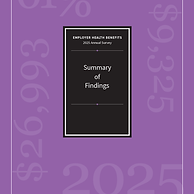Wilgan Insurance Inc Ensuring Your Trust and Confidence Is Our Primary Concern

Wilgan Insurance Inc.
Blog
Click Here
This guide is designed to assist consumers who have been denied coverage or reimbursement for services under their health insurance plan. This overview provides information on the appeal process through your insurance company, as well as information on filing for an independent review through the State of Connecticut External Review Program.
Click Here
No Surprises Act Information
Office of Healthcare Advocate
The mission of the Office of the Healthcare Advocate (OHA), a Connecticut Government entity, is to assist consumers with healthcare issues. OHA focuses on assisting consumers to resolve problems with their health insurance plans. Contact OHA for assistance with claim denials and pre-authorization issues.

Form 1095
Form 1095 is a series of tax forms used to report health insurance coverage provided by your employer, the Marketplace, or other sources. There are three main variants:
-
Form 1095-A, Health Insurance Marketplace Statement: This form is sent to individuals who enrolled in coverage through the Health Insurance Marketplace (Healthcare.gov or a state-based Marketplace). It provides information about the coverage, the premiums paid, any premium tax credits received, and who was covered.
-
Form 1095-B, Health Coverage: This form is sent by insurers, self-insuring employers, government agencies, and other providers of health coverage. It reports the type of coverage provided and the individuals covered under that policy.
-
Form 1095-C, Employer-Provided Health Insurance Offer and Coverage: Employers with 50 or more full-time employees must provide this form to employees who were eligible for health insurance coverage through their employer-sponsored plan. It outlines the coverage offered, the months of coverage, and the employee's share of the premium costs.
These forms are used to verify that individuals and families have minimum essential health coverage as required by the Affordable Care Act (ACA) and to determine eligibility for premium tax credits, exemptions, and penalties related to the individual mandate. When filing taxes, taxpayers may need to include information from these forms, particularly if they received premium tax credits or if they need to claim an exemption from the individual mandate penalty.
_bmp.png)
The Viewpoints of The Employer and The Purchaser
_bmp.png)
Findings From An Employer-Led Transparency Initiative; Prices Paid to Hospitals By Private Health Plans

CT 2026 Individual and Small Group Rate Increases

The Cost of Chronic Diseases
.png)
Connecticut Long-Term Care Insurance Rates and Options

Overview of the 2025 Employer Health Benefits Survey

Complete 2025 Employer Health Benefits Survey Results
_edited.jpg)




_edited.jpg)
